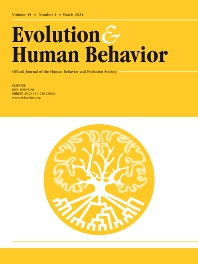Journals in Life sciences general
Journals in Life sciences general
- ISSN: 1095-6433
- 5 Year impact factor: 2.2
- Impact factor: 2.1
Comparative Biochemistry and Physiology - Part A: Molecular & Integrative Physiology

- ISSN: 1096-4959
- 5 Year impact factor: 2
- Impact factor: 1.9
Comparative Biochemistry and Physiology - Part B: Biochemistry & Molecular Biology

- ISSN: 1744-117X
- 5 Year impact factor: 2.5
- Impact factor: 2.2
Comparative Biochemistry and Physiology - Part D: Genomics and Proteomics

- ISSN: 0960-9822
- 5 Year impact factor: 9.8
- Impact factor: 8.1
Current Biology

- ISSN: 0160-9327
- 5 Year impact factor: 0.5
- Impact factor: 0.5
Endeavour

- ISSN: 0301-2115
- 5 Year impact factor: 2.3
- Impact factor: 2.1
European Journal of Obstetrics & Gynecology and Reproductive Biology

- ISSN: 1090-5138
- 5 Year impact factor: 3.7
- Impact factor: 3
Evolution and Human Behavior

- ISSN: 0531-5565
- 5 Year impact factor: 3.8
- Impact factor: 3.3
Experimental Gerontology

- ISSN: 1074-7613
- 5 Year impact factor: 33.2
- Impact factor: 25.5
Immunity

- ISSN: 0890-4065
- 5 Year impact factor: 2.3
- Impact factor: 1.8
Journal of Aging Studies
